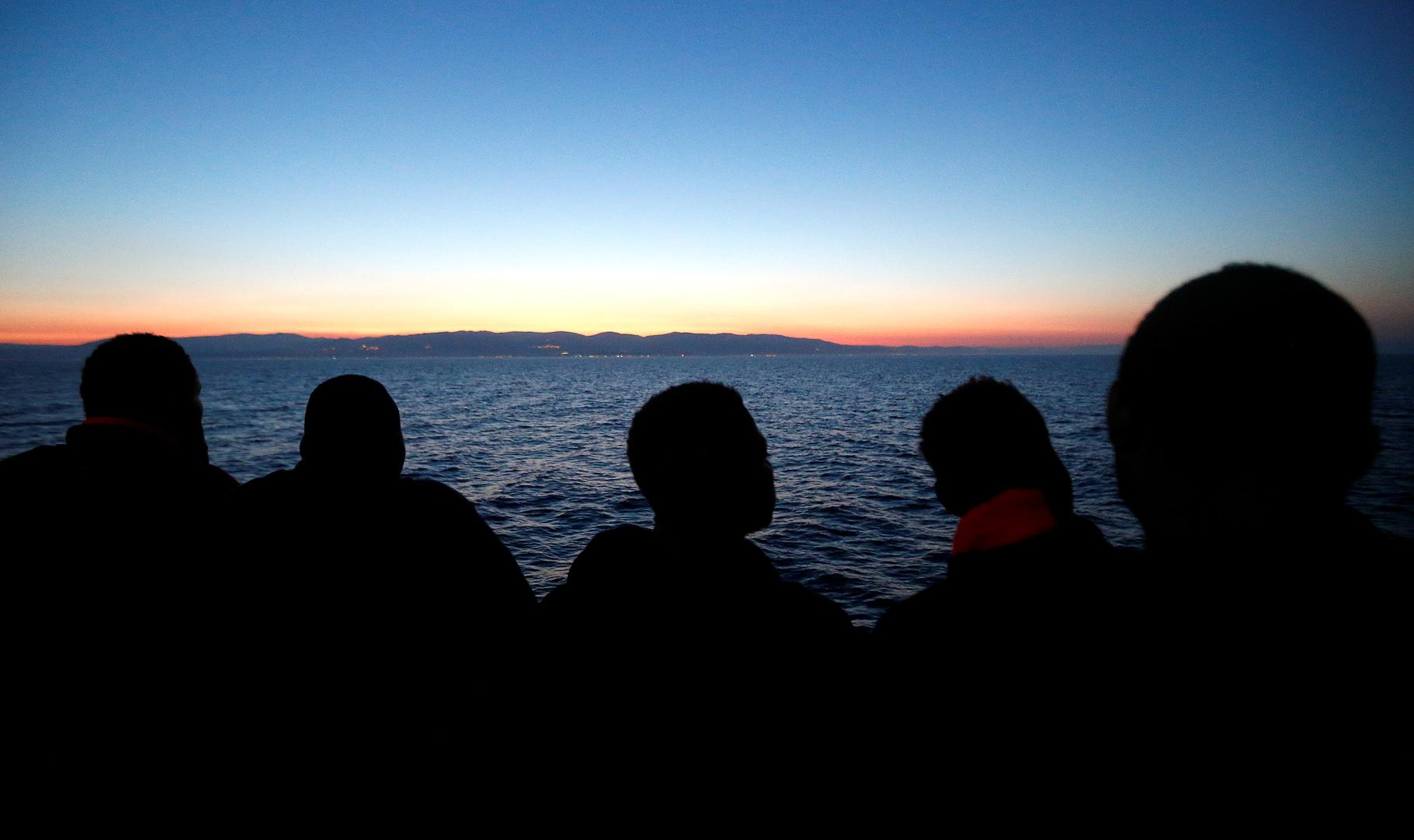
Migrants look at south Italy's coast as they approach on the Vos Hestia ship after being rescued by " Save the Children" crew on the Mediterranean sea off the Libya coast, June 20, 2017.
© 2017 ReutersNo one pretends there is an easy way for the European Union to manage the flow of asylum seekers and other migrants arriving by boat from Libya. Yet there are certain basic principles of human rights – and decency – that should guide the EU response.
The Mediterranean crossing from Libya toward Italy has become the world’s most dangerous. Some 103,000 people have survived the journey this year through late September, but 2,471 have drowned or gone missing.
What would lead anyone to risk such a perilous journey? Some flee persecution or violence at home. Others, fleeing crushing poverty, hope for a better life in Europe. But all have traversed Libya, one of the world’s most inhospitable places for migrants.
Divided today among three competing authorities, Libya has become a smuggler’s paradise and a migrant’s nightmare. Non-Libyan migrants seeking transit to Europe are typically corralled and kept in squalid, overcrowded detention centers where malnutrition and illness are widespread, and forced labor, beatings, sexual abuse and torture are rife. The UN Refugee Agency estimates that more migrants are killed crossing Libya these days than die at sea.
International refugee law prohibits forcibly returning anyone to such conditions, which is why boats rescuing migrants – whether operated by the EU, Italy, or nongovernmental groups – don’t return them. So far, most have been taken to Italy.
Some, such as Italy’s 5 Star Movement and the far-right Northern League, criticize these rescue efforts as a “pull factor,” but there is no evidence that ending them would deter the migrants from embarking. It would, however, increase the drownings.
Many of the other ideas offered for managing the flow have been similarly flawed. French President Emmanuel Macron briefly suggested that the EU screen asylum seekers inside Libya to avert the need for them to take to the sea, but he quickly withdrew the idea once it was pointed out that Libya is safe neither for the screeners nor anyone seeking to be screened.
The EU is supporting Libyan coastal forces, arguing that they will curtail smugglers and save lives, but under current circumstances these forces are doing indirectly what the EU is prohibited from doing directly – sending people back to the horrible, lawless conditions of detention. Separate deals with militias who would otherwise be involved in smuggling may be behind the significant drop in boat departures during the summer – normally a peak crossing period – but no one can predict how long that will hold. In the meantime, those who might have escaped remain trapped in a hellish environment.
Continue reading
No comments:
Post a Comment